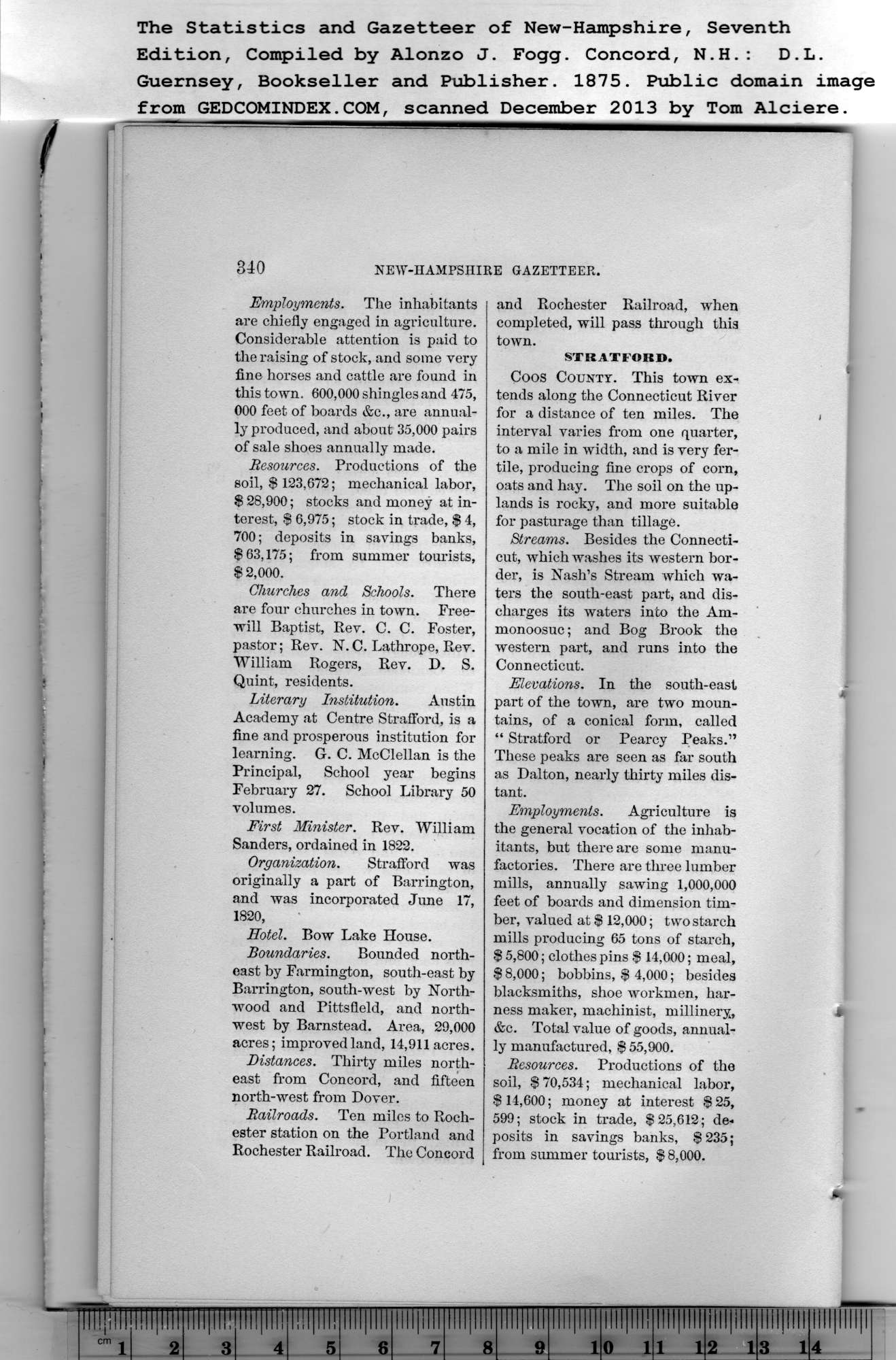|
Employments. The inhabitants
are chiefly engaged in agriculture.
Considerable attention is paid to
the raising of stock, and some very
fine horses and cattle are found in
this town. 600,000 shingles and 475,
000 feet of boards &c., are annual-
ly produced, and about 35,000 pairs
of sale shoes annually made.
The Statistics and Gazetteer of New-Hampshire, Seventh
Edition, Compiled by Alonzo J. Fogg. Concord, N.H.: D.L.
340 NEW-HAMPSHIRE GAZETTEER.
Resources. Productions of the
soil, $123,672; mechanical labor,
$ 28,900; stocks and money at in-
terest, $ 6,975; stock in trade, $ 4,
700; deposits in savings banks,
$63,175; from summer tourists,
$ 2,000.
Churches and Schools. There
are four churches in town. Free-
will Baptist, Rev. C. C. Foster,
pastor; Rev. N. C. Lathrope, Rev.
William Rogers, Rev. D. S.
Quint, residents.
Literary Institution. Austin
Academy at Centre Strafford, is a
fine and prosperous institution for
learning. G. C. McClellan is the
Principal, School year begins
February 27. School Library 50
volumes.
First Minister. Rev. William
Sanders, ordained in 1822.
Organization. Strafford was
originally a part of Barrington,
and was incorporated June 17,
1820,
Hotel. Bow Lake House.
Boundaries. Bounded north-
east by Farmington, south-east by
Barrington, south-west by North-
wood and Pittsfield, and north-
west by Barnstead. Area, 29,000
acres; improved land, 14,911 acres.
Distances. Thirty miles north-
east from Concord, and fifteen
north-west from Dover.
Railroads. Ten miles to Roch-
ester station on the Portland and
Rochester Railroad. The Concord
and Rochester Railroad, when
completed, will pass through this
town. |
STRATFORD.
Coos County. This town ex-
tends along the Connecticut River
for a distance of ten miles. The
interval varies from one quarter,
to a mile in width, and is very fer-
tile, producing fine crops of corn,
oats and hay. The soil on the up-
lands is rocky, and more suitable
for pasturage than tillage.
Streams. Besides the Connecti-
cut, which washes its western bor-
der, is Nash’s Stream which wa-
ters the south-east part, and dis-
charges its waters into the Am-
monoosuc; and Bog Brook the
western part, and runs into the
Connecticut.
Elevations. In the south-east
part of the town, are two moun-
tains, of a conical form, called
“ Stratford or Pearcy Peaks.”
These peaks are seen as far south
as Dalton, nearly thirty miles dis-
tant.
Employments. Agriculture is
the general vocation of the inhab-
itants, but there are some manu-
factories. There are three lumber
mills, annually sawing 1,000,000
feet of boards and dimension tim-
ber, valued at $ 12,000; two starch
mills producing 65 tons of starch,
$ 5,800; clothes pins $ 14,000; meal,
$ 8,000; bobbins, $ 4,000; besides
blacksmiths, shoe workmen, har-
ness maker, machinist, millinery,
&c. Total value of goods, annual-
ly manufactured, $ 55,900.
Resources. Productions of the
soil, $ 70,534; mechanical labor,
$ 14,600; money at interest $ 25,
599; stock in trade, $25,612; de*
posits in savings banks, $ 235;
from summer tourists, $ 8,000. |
